▼ 100% strategic sale of CEL approved [08-31-17]
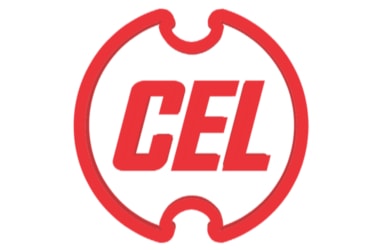 The Centre has approved a 100% strategic sale along with transfer of management control of Central Electronics Ltd (CEL). The Centre has approved a 100% strategic sale along with transfer of management control of Central Electronics Ltd (CEL).
Incorporated in 1974, CEL is under the administrative control of Ministry of Science and Technology.
The CPSE is wholly owned by the government and has a net worth of ₹50.34 crore as on March 2017.
The Government of India (GoI) has ‘in-principle’ decided to disinvest its 100 per cent equity in Central Electronics Ltd through strategic sale with transfer of management control.
The government plans to engage an advisor from a consulting firm, investment banker or a merchant banker or a financial institution, for providing advisory services and managing the disinvestment process.
It is also looking to appoint a legal firm for advising on the strategic sale.
The Union Cabinet chaired by Prime Minister Shri Narendra Modi approved a Memorandum of Understanding (MoU) between India and Israel on “India-Israel Industrial R&D and Technological Innovation Fund (I4F)”. The MoU was concluded in July, 2017
India and Israel will make a contribution of four million US Dollars each for the Fund, both equivalent amount, annually for five years. The Innovation Fund will be governed by a joint Board which will consist of four members from each country.
|
▼ Cabinet approves GST ordinance [08-31-17]
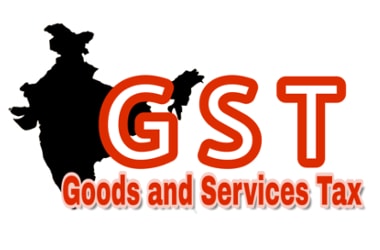 The Union Cabinet chaired by Prime Minister Shri Narendra Modi has given its approval to the proposal of the Finance Ministry to promulgate an ordinance to suitably amend the Goods and Services Tax (Compensation to States) Act, 2017. The Union Cabinet chaired by Prime Minister Shri Narendra Modi has given its approval to the proposal of the Finance Ministry to promulgate an ordinance to suitably amend the Goods and Services Tax (Compensation to States) Act, 2017.
The approval would allow to increase the maximum rate at which the Compensation Cess can be levied from 15% to 25% on:
a. motor vehicles for transport of not more than thirteen persons, including the driver [falling under sub-headings 870210, 8702 20, 8702 30 or 8702 90]; and
b. motor vehicles falling under headings 8703.
The GST Council, in its meeting held in August 2017, taking into consideration the fact that post introduction of GST, the total incidence on motor vehicles [GST+ Compensation Cess] has come down vis-a-vis pre-GST total tax, incidence.
It had recommended increase in the maximum rate at which Compensation Cess can be levied on motor vehicles falling under headings 8702 and 8703 from 15% to 25%.
The issue regarding the increase in effective rate of Compensation Cess on motor vehicles will be examined by the GST Council in due course.
|
▼ PSU Banks to now amalgamate through Alternative Mechanism [08-24-17]
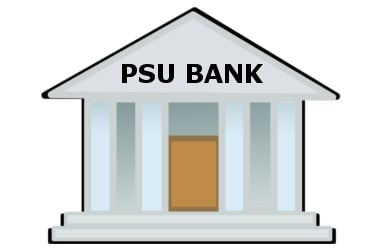 The Union Cabinet chaired by the Prime Minister Shri Narendra Modi has given in-principle approval for Public Sector Banks to amalgamate through an Alternative Mechanism (AM). The Union Cabinet chaired by the Prime Minister Shri Narendra Modi has given in-principle approval for Public Sector Banks to amalgamate through an Alternative Mechanism (AM).
The decision would facilitate consolidation among the Nationalised Banks to create strong and competitive banks.
The decision regarding creating strong and competitive banks would be solely based on commercial considerations.
The proposal must start from the Boards of Banks.
The proposals received from Banks for in-principle approval to formulate schemes of amalgamation shall be placed before the Alternative Mechanism (AM).
After in-principle approval, the Banks will take steps in accordance with law and SEBI’s requirements.
The final scheme will be notified by Central Government in consultation with the Reserve Bank of India.
Background:
- In 1991, it was suggested that India should have fewer but stronger Public Sector Banks.
- However, it was only in May 2016 that effective action to consolidate public sector banks began to be taken by announcing amalgamation of six banks into the State bank of India.
- The merger was completed in record time, unlike earlier mergers of State Banks of Indore and Saurashtra.
- SBI is now a single bank with about 24000 branches, over 59000 ATMs, 6 lakh POS machines and over 50,000 business correspondents, which serve all parts of the country, including far flung areas.
- Indeed 70% of SBI’s network lies in rural and semi urban areas. In that sense, the bank serves to unite India through a uniform banking culture.
- It also has a significant international presence, and is one of the largest global banks.
- Its size, financial strength and outreach have made it possible for customers to access a worldwide network of branches across all time zones, as well as to a very wide variety of banking products and superior technology.
- Loans to the small business man or woman and to the Krishak have become cheaper as SBI offers the lowest lending rates.
- More than 8.6 lakh merchants have been on board on BHIM Aadhaar, Bharat QR and POS, increasing the digital banking footprint. SBI has successfully raised Rs.15,000 crore QIP.
- There are now 20 PSBs other than SBI.
|
▼ ICMR signs MoU with IVI [08-23-17]
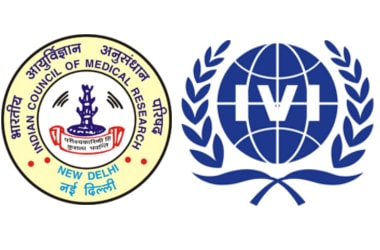 The Indian Council of Medical Research (ICMR) has signed an MoU with the International Vaccine Institute (IVI). The Indian Council of Medical Research (ICMR) has signed an MoU with the International Vaccine Institute (IVI).
This is for collaborating on vaccine research and development.
India will commit $5,00,000 (₹3.20 crore) annually for a stake in IVI - an amount approved during a Cabinet meeting in January
The MoU was signed between Soumya Swaminathan, the Director General of ICMR and Secretary, Department of Health Research, Manoj Jhalani, Additional Secretary and managing director, National Health Mission, and IVI Director General Jerome H. Kim.
IVI has been partnering with Indian vaccine manufacturers, research institutes, government, and public health agencies on vaccine development, research, and training.
One of the most successful collaborations was with Shantha Biotech on the development of Shanchol, the world’s first low-cost oral cholera vaccine.
The vaccine was licensed in India in 2009 and WHO-prequalified in 2011.
India is a vaccine industry powerhouse that supplies 60% of the world’s vaccines.
The signing of the MoU is a continuation of our partnership with India to provide safe, effective and affordable vaccines for people around the world.
|
▼ World Bank, Ministry of Finance sign environment project agreement [08-17-17]
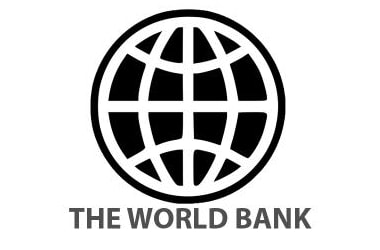 A Grant Agreement from the Global Environment Facility (GEF) of the World Bank of USD 24.64 million for “Ecosystem Service Improvement Project” was signed on 16th Aug 2017 by the Ministry of Finance on behalf of the Government of India and the World Bank. A Grant Agreement from the Global Environment Facility (GEF) of the World Bank of USD 24.64 million for “Ecosystem Service Improvement Project” was signed on 16th Aug 2017 by the Ministry of Finance on behalf of the Government of India and the World Bank.
The size of Project is USD 24.64 million which entirely will be financed by the World Bank out of its GEF Trust Fund.
The project’s duration is 05 years.
Ministry of Environment, Forest and Climate Change (MoEF&CC) will implement the Project in the States of Chhattisgarh and Madhya Pradesh through Indian Council of Forestry Research & Education under the National Mission for Green India.
The objective of the Project is to strengthen the institutional capacity of the Departments of Forestry and Community Organisations to enhance forest ecosystem services and improve the livelihoods of forest dependent communities in Central Indian Highlands.
|
▼ Facebook, Odisha state government launch SheMeansBusiness initiative [08-16-17]
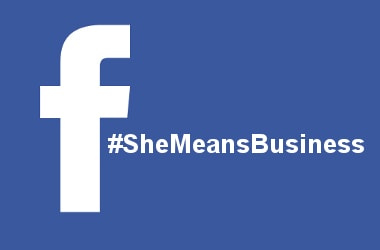 Social media giant Facebook will monitor the growth of the MSMEs in Odisha after imparting training to them in next one year. Social media giant Facebook will monitor the growth of the MSMEs in Odisha after imparting training to them in next one year.
The social networking giant has partnered the Odisha’s MSME department and Project Mission Shakti to train 25,000 entrepreneurs by the end of 2018.
The state government has plans to organise hands-on workshops for MSME entrepreneurs and women SHGs on 'Digital Marketing Skills'.
Facebook will prepare a data base through registrations in which they will take the email ids and mobile numbers of entrepreneurs in all the workshops.
After sometime either through personal conversations or through email, they can find out what is the difference Facebook has made in the business turnover or profits.
Facebook launched its SheMeansBusiness programme in Bhubaneswar, which was attended by about 1,100 women entrepreneurs of the state. The programme of Facebook is launched in 16 countries around the world including India.
It is designed to reach out to aspiring and established women entrepreneurs to help them build and grow their business online.
As per Facebook, it is the largest congregation globally under SheMeansBusiness programme.
More than 150 entrepreneurs today created their pages and uploaded their products on their profile.
CM Naveen Patnaik stressed on the use of the three Ts - technology, teamwork and transparency - to bring about transformation in the lives of people.
This is amply demonstrated today in the partnership of the government with Facebook - a partnership aimed to reduce the digital divide and empower nearly 25,000 entrepreneurs and SHGs over the next one year.
|
▼ SBI merger with 5 associate banks approved [08-11-17]
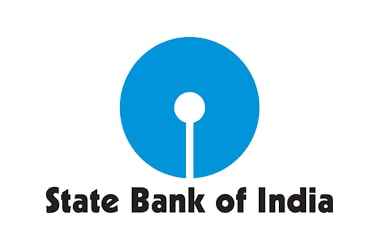 The merger of the five associate banks with the SBI will lead to increased capital base and availability of loan, as the Lok Sabha passed the bill approving the amalgamation. The merger of the five associate banks with the SBI will lead to increased capital base and availability of loan, as the Lok Sabha passed the bill approving the amalgamation.
The Lok Sabha passed the bill to repeal the SBI (Subsidiary Banks) Act 1959, State Bank of Hyderabad Act 1956 and to further amend the State Bank of India Act, 1955, following the merger of five associates with the parent SBI.
With this merger, the SBI has come in the list of top 50 banks globally and is ranked at the 45th position.
The merger will bring about increased capital base and increased ability to give loans. Also, small banks will get access to products like mutual funds.
During the last two years, 29 crore bank accounts were opened, of which 25 per cent were zero balance accounts and farm loans increased from INR 3.5 lakh crore in 2009-10 to INR 10.65 lakh crore in 2016-17.
The merger will help increase SBI’s scope of operation and will pose a challenge to private banks as it will work as per the requirements of the people.
The merger has been planned keeping in mind the benefit of people and going forward its benefits will be seen.
According to the statement of object and reasons of the State Banks (Repeal and Amendment) Bill 2017, after the acquisition of the subsidiary banks by SBI, the subsidiary banks have ceased to exist and, therefore, it is necessary to repeal the State Bank of India (Subsidiary Banks) Act, 1959 and the State Bank of Hyderabad Act, 1956.
Five associates and the Bharatiya Mahila Bank became part of State Bank of India (SBI) beginning April 1, catapulting the country's largest lender to among the top 50 banks in the world.
The five associates that were merged are State Bank of Bikaner and Jaipur (SBBJ), State Bank of Hyderabad (SBH), State Bank of Mysore (SBM), State Bank of Patiala (SBP) and State Bank of Travancore (SBT).
Following the merger, the total customer base of SBI increased to 37 crore with a branch network of around 24,000 and nearly 59,000 ATMs across the country.
The merged entity began operation with a deposit base of more than INR 26 lakh crore and advances level of INR 18.50 lakh crore.
As per the bill, after the acquisition of all the subsidiary banks by the SBI, it is not necessary to retain such provisions in the State Bank of India Act, 1955. .
Therefore, certain amendments are necessary in the said Act in so far as they relate to the subsidiary banks. The amendments are consequential in nature.
SBI had 90 per cent shareholding in the State Bank of Mysore, 75.07 per cent shareholding in the State Bank of Bikaner and Jaipur and 79.09 per cent shareholding in the State Bank of Travancore.
SBI: Know More
- State Bank of India is an Indian multinational, public sector banking and financial services company.
- It is a government-owned corporation with its headquarters in Mumbai, Maharashtra.
- Customer service: 1800 425 3800
- Chairperson: Arundhati Bhattacharya
- Headquarters: Mumbai
- Founded: 1 July 1955
- Major Subsidiaries: SBI Cards, State Bank of Hyderabad
|
▼ Google, NSDC join hands to train app developers [08-11-17]
 The NSDC and Google India will come together to train app developers for mobile platform on the Android and web platforms. The NSDC and Google India will come together to train app developers for mobile platform on the Android and web platforms.
This is aimed at improving the country’s mobile application development ecosystem.
The National Skill Development Corporation (NSDC) is a public-private partnership enterprise under the Ministry of Skill Development & Entrepreneurship.
Under the initiative, NSDC will introduce a specific course with the scope to train developers to create applications for the mobile platform that can be used on smartphone and tablets running on the Android operating system.
The 100-hour duration course is designed to be delivered by NSDC’s partner agencies, outside the formal education system.
NSDC and Google India will also work together to focus on up-skilling Android trainers under the programme.
The collaboration aims to accelerate mobile skill training and create opportunities for youth in the country.
According to a study conducted by IMaCS (the management consulting arm of rating agency ICRA) on behalf of NSDC, India is likely to have an incremental requirement of 24.4 crore skilled people by 2022 in 21 high growth sectors.
NSDC: Know More
- The National Skill Development Corporation India (NSDC) was setup as a one of its kind, Public Private Partnership Company.
- It has a primary mandate of catalysing the skills landscape in India.
- NSDC is a unique model created with a well thought through underlying philosophy based on the following pillars:
1. Create: Proactively catalyse creation of large, quality vocational training institutions. 2. Fund: Reduce risk by providing patient capital. Including grants and equity. 3. Enable: the creation and sustainability of support systems required for skill development. This includes the Industry led Sector Skill Councils.
|
▼ Bharat 22 - New exchange traded fund launched! [08-7-17]
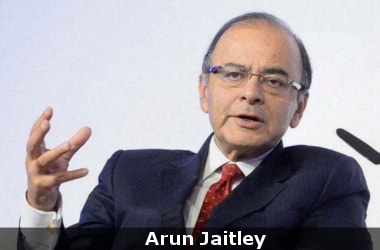 The Union Finance Minister Shri Arun Jaitley announced a new Exchange Traded Fund (ETF) by the name BHARAT 22. The Union Finance Minister Shri Arun Jaitley announced a new Exchange Traded Fund (ETF) by the name BHARAT 22.
Bharat 22 consists of 22 stocks of CPSE's, PSB's & strategic holding of SUUTI .
Compared to energy heavy CPSE ETF, Bharat 22 is a well diversified portfolio with 6 sectors (Basic Materials, Energy, Finance, FMCG, Industrials & Utilities).
The Bharat 22 Index will be rebalanced annually. ICICI Prudential AMC will be the ETF Manager and Asia Index Private Limited (JV BSE and S& P Global) will be the Index Provider.
In the Budget Speech of 2017-18, the Finance Minister Shri Arun Jaitley had promised to use ETF as a vehicle for further disinvestment of shares.
The target for CPSE’s disinvestment in 2017-18 was set at INR 72,500 crore. During the current Financial Year 2017-18, the Government has realised approx INR 9,300 crore through nine disinvestment transactions so far.
Globally ETF Assets have grown significantly.
Globally today there are 4 trillion dollar worth Assets Under Management (AUM).
These are expected to touch $7 trillion by 2021.
Large Investors (Sovereign/Pension Funds) prefer investing in ETFs due to the benefits of ETF being Low cost & Less risky; being Highly Liquid assets; Transparent Investment and that these can be traded at Real Time Market Price
Highlights of Growth of ETF market in India
- Flexibility in Investment guidelines of PF to invest in equity/ETF
- ETF Assets Under Management (AUM) has grown ∽5 times in last 3 years
- ETF has been a preferred instrument for investment by PF's following flexibility given to them by govt. for their investments.
- Government raised INR 8500 crore by divesting through CPSE ETF in FY'16-17.
|
▼ RBI cuts repo, reverse repo by 25 bps [08-3-17]
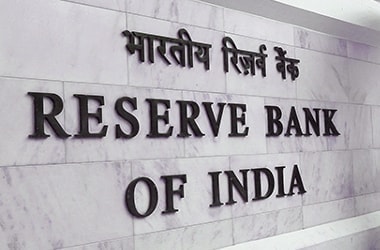 The RBI has cut the repo rate by 25 bps to 6%. This was on expected lines as market consensus predicted a 25 bps cut. The RBI has cut the repo rate by 25 bps to 6%. This was on expected lines as market consensus predicted a 25 bps cut.
Reverse repo rate has also been cut by 0.25 per cent to 5.75 per cent.
The six member monetary policy committee voted on the basis of a majority for a cut. Dr. Chetan Ghate, Dr. Pami Dua, Dr. Viral V. Acharya and Dr. Urjit R. Patel were in favour of the monetary policy decision.
Dr. Ravindra H. Dholakia voted for a policy rate reduction of 50 basis points and Dr. Michael Debabrata Patra voted for status quo.
The cut in rates comes against the backdrop of slowing credit growth, very low inflation and low economic growth.
Retail inflation has fallen to a five year low of 1.5 per cent in June and expected to remain soft for a while longer. Bank credit is growing at just a little over 6 per cent year on year.
The economy has slowed down through the past five quarters from a high of 9.1% registered in the fourth quarter of fiscal 2016 to a level of 6.1% in the fourth quarter of fiscal 2017.
Factory activity contracted to an 8-year low with the purchasing managers’ index at just 47.9 points in July.
The RBI noted in its statement that actual headline inflation for Q1 has tracked projections of being in the range of 2 to3.5 per cent in the first half of the year.
Looking ahead, as base effects fade, the evolving momentum of inflation would be determined by
(a) the impact on the CPI of the implementation of house rent allowances (HRA) under the 7th central pay commission (CPC);
(b) the impact of the price revisions withheld ahead of the GST; and
(c) the disentangling of the structural and transitory factors shaping food inflation.
It noted that there are several factors contributing to uncertainty around this baseline inflation trajectory.
It flagged its concern that implementation of farm loan waivers by States may result in possible fiscal slippages and undermine the quality of public spending, entailing inflationary spillovers.
It said that the timing of the States’ implementation of the salary and allowances award is critical–it is not factored into the baseline projection in view of lack of information on their plans.
If States choose to implement salary and allowance increases similar to the Centre in the current financial year, headline inflation could rise by an additional estimated 100 basis points above the baseline over 18-24 months, the statement noted.
Some moderating forces are also at work, the RBI indicated.
First, the second successive normal monsoon coupled with effective supply management measures may keep food inflation under check.
Second, if the general moderation of price increases in CPI excluding food and fuel continues, it will contain upside pressures on headline inflation.
Third, the international commodity price outlook is fairly stable at the current juncture.
RBI Retains GVA outlook
- The RBI noted that high levels of stress in twin balance sheets - banks and corporations - are likely to deter new investment.
- The real estate sector also may see delayed project launches as a new regulatory framework comes into play.
- The states’ finances could come under pressure with farm loan waivers and limit fresh capacity expansion.
- It said however there were upsides to the baseline projections emanating from good monsoon progress, a good kharif harvest, boost to rural demand, step up in rural allocations, and the positive impact of GST.
- The rising probability of another good kharif harvest, the boost to rural demand from the higher budgetary allocation to housing in rural areas, the significant step-up in the budgetary allocation for roads and bridges, and the growth-enhancing effects of the GST spur investment.
- External demand conditions are gradually improving and should support the domestic economy, although global political risks remain significant.
- Keeping in view these factors, the projection of real GVA growth for 2017-18 is retained at 7.3%."
Inflation outlookThe RBI's Monetary Policy committee was cautious in expressing its view that while inflation has been soft, it still remained to be seen whether it was transient or whether the 'a more durable disinflation was underway'. The MPC noted that some of the upside risks to inflation have either reduced or not materialised- (i) the baseline path of headline inflation excluding the HRA impact has fallen below the projection made in June to a little above 4 per cent by Q4; (ii) inflation excluding food and fuel has fallen significantly over the past three months; and, (iii) the roll-out of the GST has been smooth and the monsoon normal. - It said, that consequently, some space has opened up for monetary policy accommodation, given the dynamics of the output gap and accordingly decided to reduce the policy repo rate by 25 basis points.
- Noting, however, that the trajectory of inflation in the baseline projection is expected to rise from current lows, the MPC decided to keep the policy stance neutral and to watch incoming data.
- The MPC remains focused on its commitment to keeping headline inflation close to 4 per cent on a durable basis, the statement said.
|
▼ BookMyShow to foray into audio entertainment; acquires Nfusion [08-2-17]
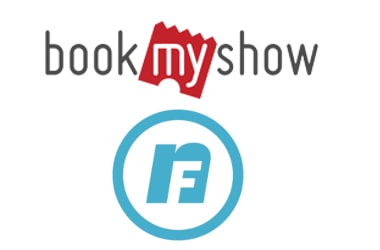 BookMyShow, an online entertainment ticketing platform, has announced the acquisition of Nfusion, a media platform, for an unspecified amount in an all-cash deal to foray into audio entertainment. BookMyShow, an online entertainment ticketing platform, has announced the acquisition of Nfusion, a media platform, for an unspecified amount in an all-cash deal to foray into audio entertainment.
Nfusion was set up in West Asia in 2009 by Shoaib G.M. Khan, Sivagurunathan S. and Prabhakar Reddy as a high definition video-on-demand platform that allowed users to stream videos online.
The Nfusion team has brought with them immense experience.
Aditya Kuber, associate VP, Audio Entertainment, will lead this vertical.
|
▼ Financial support to MSMEs under ZED certification scheme [08-1-17]
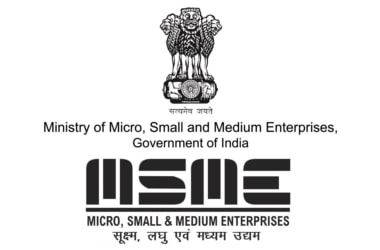 The Government has launched a new scheme namely “Financial Support to MSMEs in ZED Certification Scheme”. The Government has launched a new scheme namely “Financial Support to MSMEs in ZED Certification Scheme”.
The objective of the scheme for promotion of Zero Defect and Zero Effect (ZED) manufacturing amongst micro, small and medium enterprises (MSMEs).
It also involves ZED Assessment for their certification so as to:
- Develop an Ecosystem for Zero Defect Manufacturing in MSMEs.
- Promote adaptation of Quality tools/systems and Energy Efficient manufacturing.
- Enable MSMEs for manufacturing of quality products.
- Encourage MSMEs to constantly upgrade their quality standards in products and processes.
- Drive manufacturing with adoption of Zero Defect production processes and without impacting the environment.
- Support ‘Make in India’ campaign.
- Develop professionals in the area of ZED manufacturing and certification.
There are 50 parameters for ZED rating and additional 25 parameters for ZED Defence rating under ZED Maturity Assessment Model. The MSMEs are provided financial assistance for the activities to be carried out for ZED certification i.e., Assessment / Rating, Additional rating for Defence angle, Gap Analysis, Handholding, Consultancy for improving the rating of MSMEs by Consultants and Re-Assessment / Re-Rating. Under the scheme 22,222 MSMEs will be rated & certified under ZED Maturity Assessment Model, 5,000 MSMEs will be rated & certified under the ZED Defence Model, 7368 MSMEs will be supported for Gap Analysis, Handholding, Consultancy for improving their rating, etc. The total cost of the project is INR 491.00 crores (Government contribution Rs 365.00 crores, beneficiary MSMEs contribution Rs 126.00 crores). Quality Council of India (QCI) has been appointed as the National Monitoring & Implementing Unit (NMIU) for implementation of ZED. QCI has reported that 3217 MSMEs has been registered as on25.07.2017 for ZED Certification. The MSME-wise details are Micro: 1332, Small: 1522 & Medium: 363 and financial assistance to MSMEs is yet to commence. MSME Schemes- The Ministry of MSME is implementing a number of schemes to promote MSMEs namely:
- (i) Credit Guarantee Fund Scheme for Micro and Small Enterprises to facilitate collateral free credit to new and existing micro and small enterprises (MSEs);
- (ii) Scheme for Raw Material Assistance implemented by National Small Industries Corporation Limited under the Ministry;
- (iii) National Manufacturing Competitiveness Programme (NMCP) and Credit Linked Capital Subsidy Scheme implemented to facilitate upgradation of technology, improve processes and design;
- (iv) Management Development Training Programmes (MDPs) for enhancing managerial skills;
- (v) Micro and Small Enterprises-Cluster Development Programme to facilitate infrastructure upgradation and setting up of Common Facility Centres; and
- (vi) Marketing Development Assistance Support to MSME;
- (vii) Ministry of MSME has introduced online MSME Data Bank on 29.07.2016 for creating comprehensive database of MSMEs and
- (viii) Ministry of MSME has introduced simplified online registration “Udyog Aadhar Memorandum (UAM) for MSMEs”. 33,25,159 MSMEs registered with UAM from September, 2015 till 25.07.2017.
|